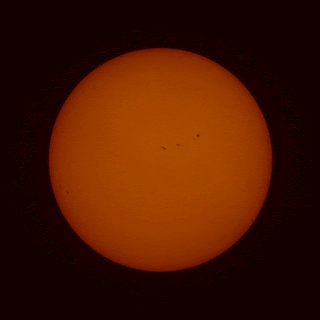Luckily, the skies where almost clear. There was a thin veil of clouds and smoke across the skies, but nothing that would hamper the view of the solar eclipse. All I had to do, was to increase the ISO of my camera to compensate for the slight decrease in light throughput.
On previous eclipses, I have done all of the exposure settings manually. Not only stressing during totality, but also error-prone and also leaving me with precious little time to enjoy the actual sight. So this time, for the first time, I decided to create an automatic system to control the camera. Since I am using Pentax, there is little or no software available. All available software supports Nikon and/or Canon. But I did find some open source program supporting Pentax. So I just modified that to handle a script I made. This way, I would get a series of exposures before totality and a series of different exposures of the corona during totality.
The following are some of the images taken, and a couple of animations of the eclipse. Both before and during totality.
 |
| A combo of 8 images from 1/4000th to 1/2 second |
Here is a video made from the exposures before totality. The camera program took 3 images per minute at 1/4000th of a second.
And here is one video of the totality itself.





